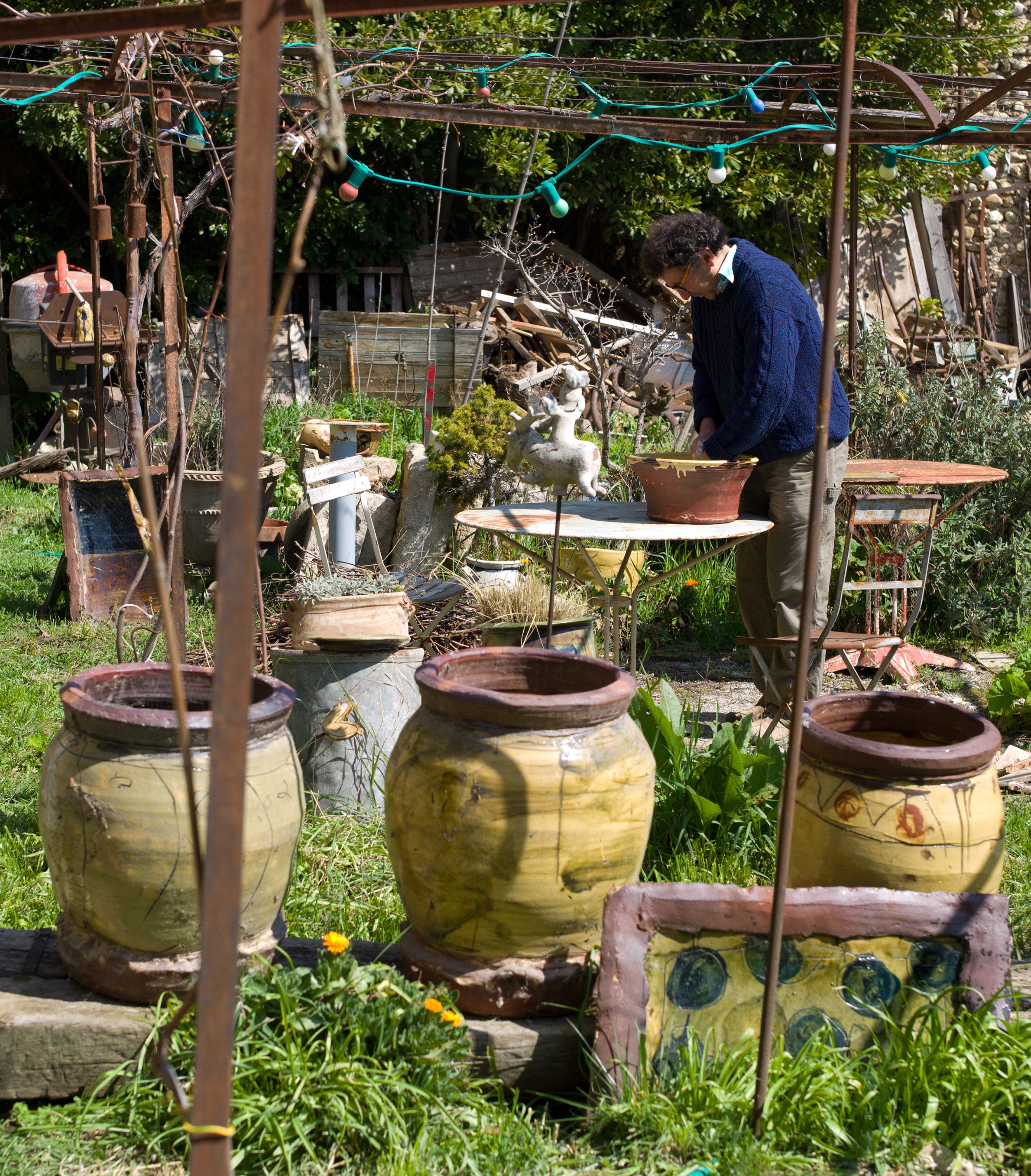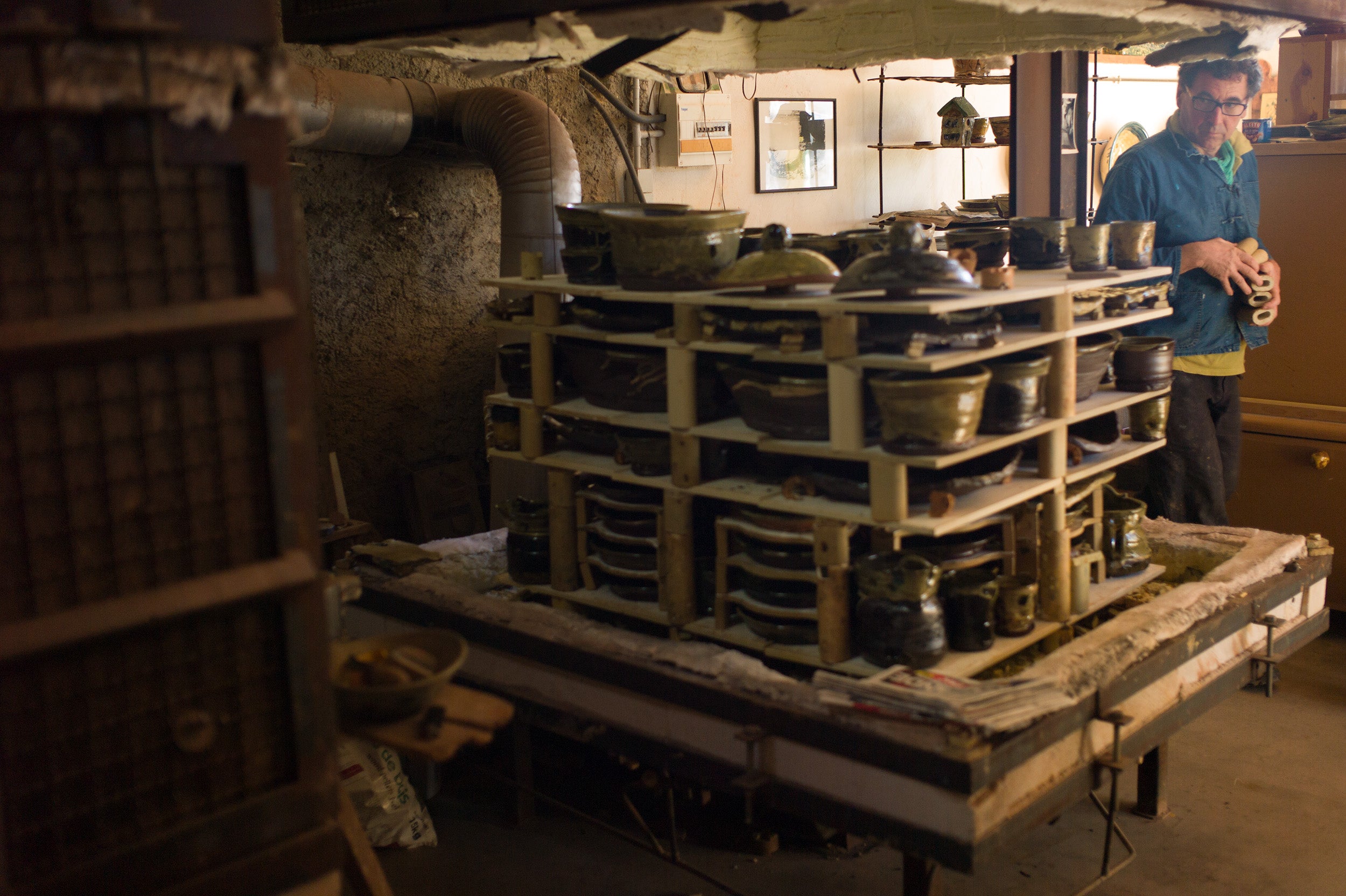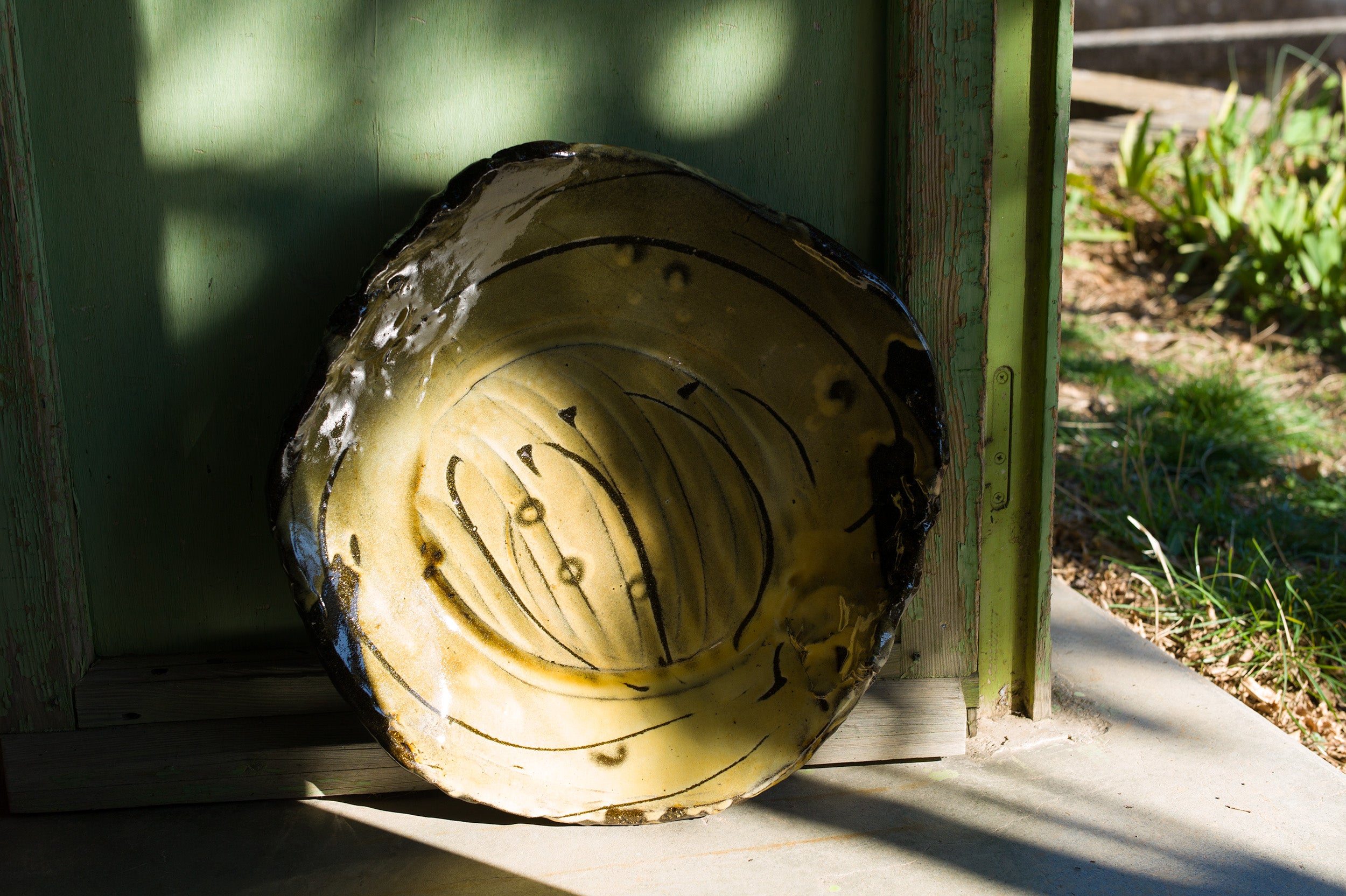Shot back in 2013 as Jean-Nicolas prepared for his first exhibition at the Goldmark Gallery, the film provides an insight into his free and spontaneous working method as he throws and glazes his pots in his cluttered atelier in the Provençal town of Valensole.
Jean-Nicolas Gérard has been working from his studio in the south of France for over 15 years now, producing loose, lively terre vernissée - the French term for slip-decorated earthenware - and enlivening the local Provençal traditions of slipware pottery.
With a glaze palette of golden yellows and browns, blue, and black, Jean-Nicolas makes beautiful, functional earthenware pots, almost all of which are designed to be used in the garden or the kitchen for the cooking and presenting of food.
Signs of the creator have always been important to Gérard. A short drive into the plateaus nearby Valensole there is an old, now abandoned and dilapidated farm originally used for making wine. Inside the outhouses are slipware tiles dating decades, if not centuries, back, many of which display the accidental finger marks and imprinted thumbs of their maker, the results of sped-up production and working to demand.
In Jean-Nicolas' work, such marks are made without self-consciousness or concern, and are celebrated for their existence on the clasped rims of dishes or in the unintended blotches of colour over slip. In some pots, like the small beakers or the folded salad dishes, these impressions are even sought out for the functional nooks they make in the clay, aiding the hand as it feels for purchase around the pot.
A keen cook himself, Gérard frequently has the use of his pots in mind as he makes - how food will look on his plates, whether his bird-like pitchers or canvas-like square dishes will be put to good use.
Adjoining the pottery studio is Jean-Nicolas' garden, an oasis of overgrown greenery and summer sun in which he grows vegetables, herbs, and flowers. Preparing clay one minute and bread-dough the next, his work as a potter is not just an occupation; it is his way of life, a simple yet special dedication to the natural material world which surrounds him.
As well as the magnificent colour of his slips and glazes, Jean-Nicolas makes great use of sgraffito, a technique which involves cutting through an upper layer of slip to reveal another clay or an underglaze beneath.
Performed at speed with the tip of a teaspoon or an improvised implement, lines are scratched over and around the surface of his pots, leaving dynamic, abstract designs cut into the clay that remind one of the line-works of Picasso or Matisse.
Large-scale works - giant jars, or his tour-de-force enormous square platters - are stood around the atelier and its accompanying gites, surrounded by pots, plants and small ceramic decorations that have been slipped into firings past.
It is telling that Gérard's loose forms work as well on the small-scale as they do in these larger pieces; for all its childlike freedom, its apparent naivety, Jean-Nicolas' pottery is the result of an acute eye, its success the result of years of careful consideration of the appropriate balance between structure and irregularity.
At its core, Jean-Nicolas' ceramics is a celebration of the earth. His pots are shaped and glazed in a way that makes you want to touch them and feel the clay, to feel the weight of what has been dug up from the ground. They are made to celebrate what is grown from that same source too - vegetables, fruit, potted plants and blooming flowers - and to spark excitement at what the natural world can offer us.





















